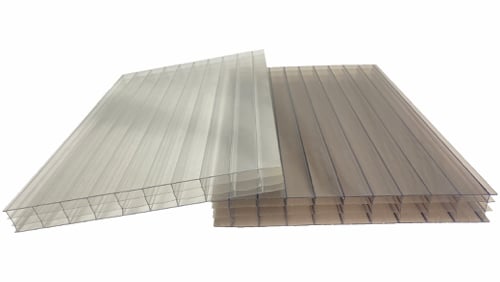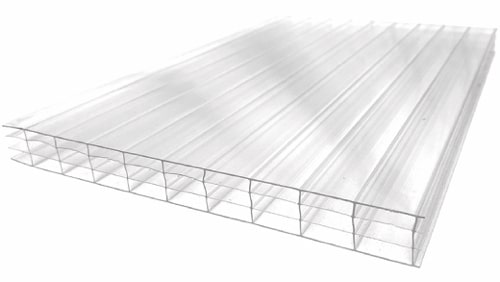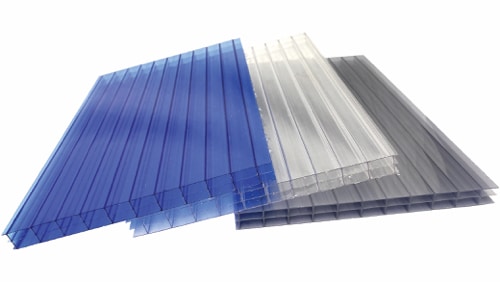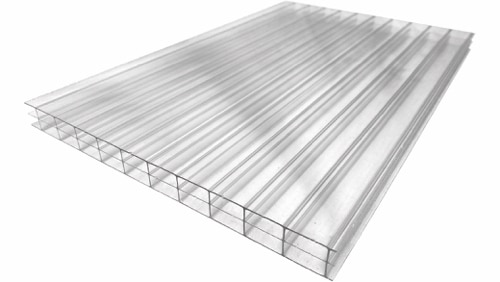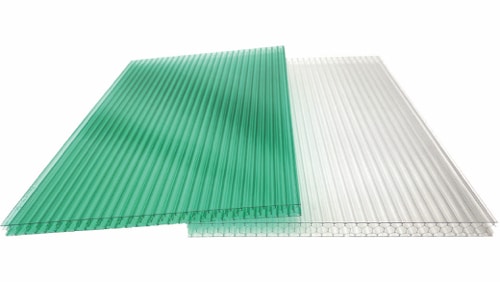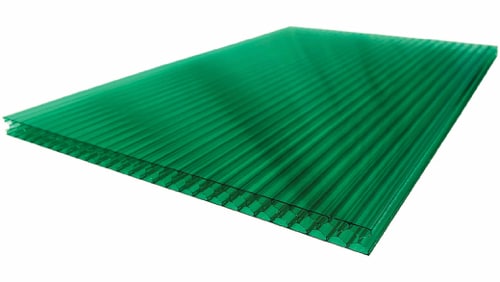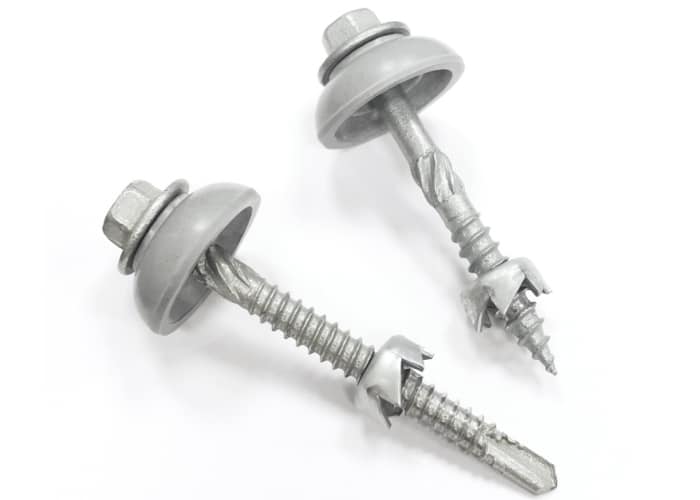The Importance of Using Polycarbonate Sheet Screws and Fixings
Polycarbonate sheets, with its high coefficient of thermal expansion, common among most thermoplastics, require special care when installing.
One of the most overlooked points is the choice of screws and fixings, which is imperative to the overall performance and lifespan of the sheet, no matter where they are affixed to.
In this article, we will delve into the specifics of how incorrect fasteners and fastening will cause short-term and long-term damage to polycarbonate sheets (which is usable for all kinds of plastic glazing materials), the fundamentals on choosing and operating polycarbonate fasteners, and the basic knowledge behind VULCAN PolyFast and PolyXpand Polycarbonate sheet fasteners design.
The Importance of Using Polycarbonate Sheet Screws and Fixings
Polycarbonate sheets, with its high coefficient of thermal expansion, common among most thermoplastics, require special care when installing.
One of the most overlooked points is the choice of screws and fixings, which is imperative to the overall performance and lifespan of the sheet, no matter where they are affixed to.
In this article, we will delve into the specifics of how incorrect fasteners and fastening will cause short-term and long-term damage to polycarbonate sheets (which is usable for all kinds of plastic glazing materials), the fundamentals on choosing and operating polycarbonate fasteners, and the basic knowledge behind VULCAN PolyFast and PolyXpand Polycarbonate sheet fasteners design.
This article is to emphasize the importance of using dedicated fasteners for polycarbonate sheets fixing.
Polycarbonate sheets, with its high coefficient of thermal expansion, common among most thermoplastics, require special care when installing.
One of the most overlooked points is the choice of screws and fixings, which is imperative to the overall performance and lifespan of the sheet, no matter where they are affixed to.
The Importance of using dedicated Polycarbonate sheet screws and fixings.
Transparent and translucent roofing materials made from non-metallic materials are used either alone or in conjunction with roll formed steel sheeting to allow light transmission through the roof. When compared with glass, such plastics are lighter in weight, more resistant to impact damage, easier to install and considerably cheaper. Polycarbonate sheeting in particular is becoming increasingly popular because of its perceived superior performance.
High Coefficient of Thermal Expansion
However, a major difficulty with non-metallic sheeting is its relatively high coefficient of thermal expansion. A 3-meter-long sheet of polycarbonate for example will expand by approximately 2.1mm for each 10°C temperature increase. A 5-meter-long sheet restrained at one end by being butted up against a brick wall can have its free end move by over 10mm in the course of a day with a 30°C temperature rise. PVC sheeting is now used less often than polycarbonate and, although PVC has the advantage of a lower cost, PVC also has a high coefficient of thermal expansion.Conventional polycarbonate sheet fastening practices
Conventional sheet fastening practices for a wide range of other building materials involve drilling a hole just sufficiently large enough for the screw being used, but this practice does not take account of the properties of materials with a large coefficient of thermal expansion and buckling and other distortion of sheets often occurs as a consequence of incorrect fastening practice.
Current polycarbonate sheet fastening practices
Current industry practice which does take CTLE of plastic materials is to ream a 10mm hole in a non-metallic roofing profile to install a #12, 4.5mm diameter screw. This requires two tools, two operations and a reasonable amount of time, effort and skill, which makes it a significant time-consuming procedure. Oftentimes, screws are positioned at one side of the hole, instead of in the center, which can result in insufficient clearance for expansion in the relevant direction.
Screw over-run and over-drive, the biggest issue of all
Another difficulty in the installation of sheet roofing profiles is screw over-run or over-drive. This is the over-tightening of fixing screws such that there is a squashing of the raised profile through which the screw is passed. It is quite common for even professional installers to overdrive a fastening screw, squashing the relevant ridge in the profile, and requiring them to reverse the screw rotation in a secondary operation to bring it to the correct position. Not only does this procedure take more time than necessary, but it may also damage the sheets.
VULCAN PolyFast and PolyXpand Fasteners
VULCAN PolyFast and PolyXpand are screws that were invented and designed for affixing plastic sheets to an underlying structure, in most cases steel purlins and battens, architectural sheet profiles made from materials which have a high coefficient of thermal expansion. It is especially useful with roofing profiles made from non-metallic roofing profiles such as those made from polycarbonate, PVC or fiberglass reinforced polyester resin.
Functionality-wise, PolyFast and PolyXpand are designed to alleviate the disadvantages of the prior art during the drill and drive process. It creates a sufficiently large hole in sheeting to provide for thermal expansion without the need for reaming a hole in advance, allow for single tool operation for installation, overcome the difficulties of centering, and potential elimination of over-driving.
To prevent damage from overdriving the screws and damaging the sheets underneath, PolyFast polycarbonate screws have an additional knurling on the shaft right after the threads. Normally, knurls on metal roofing screws acts as a cleaner to clear off excess swarf created during the drill and drive process. On PolyFast fasteners however, the knurl acts a stopper for the round cutting saw, the height at where it stops upon coming in contact with the purlins is designed to match the pitch of VULCAN polycarbonate ROMA and GRECA profiles; enough so that it provides a perfect seal on the enlarged hole, but not deform the corrugations.
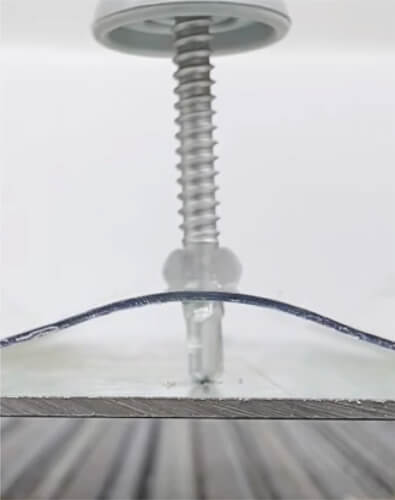
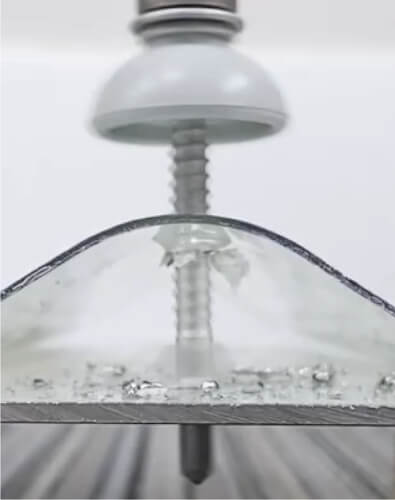
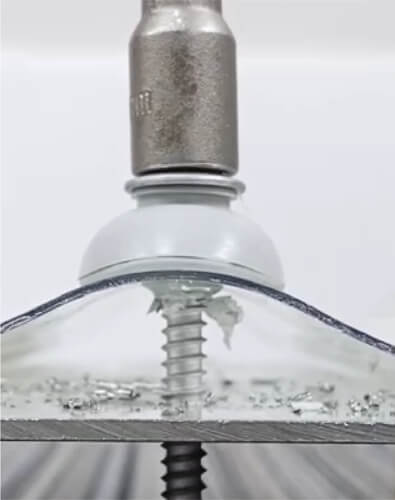
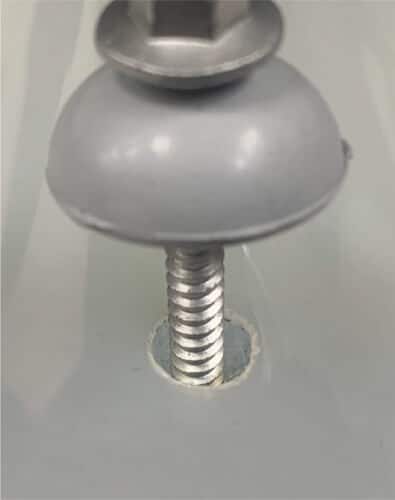
For more information on PolyXpand fasteners, click on the links below:
• PolyXpand Crest Fixing Fasteners
• PolyXpand Valley Fixing Fasteners
For more information on PolyFast fasteners, click on the links below:
• PolyFast Crest Fixing Fasteners – For Metal Battens
• PolyFast Crest Fixing Fasteners – For Timber Battens
VULCAN accessories are designed to work seamlessly with VULCAN Polycarbonate sheets. Consult VULCAN or your local dealer before using any non-conforming accessories. Failure to do so could result in damaging VULCAN Polycarbonate sheets and void warranty.

